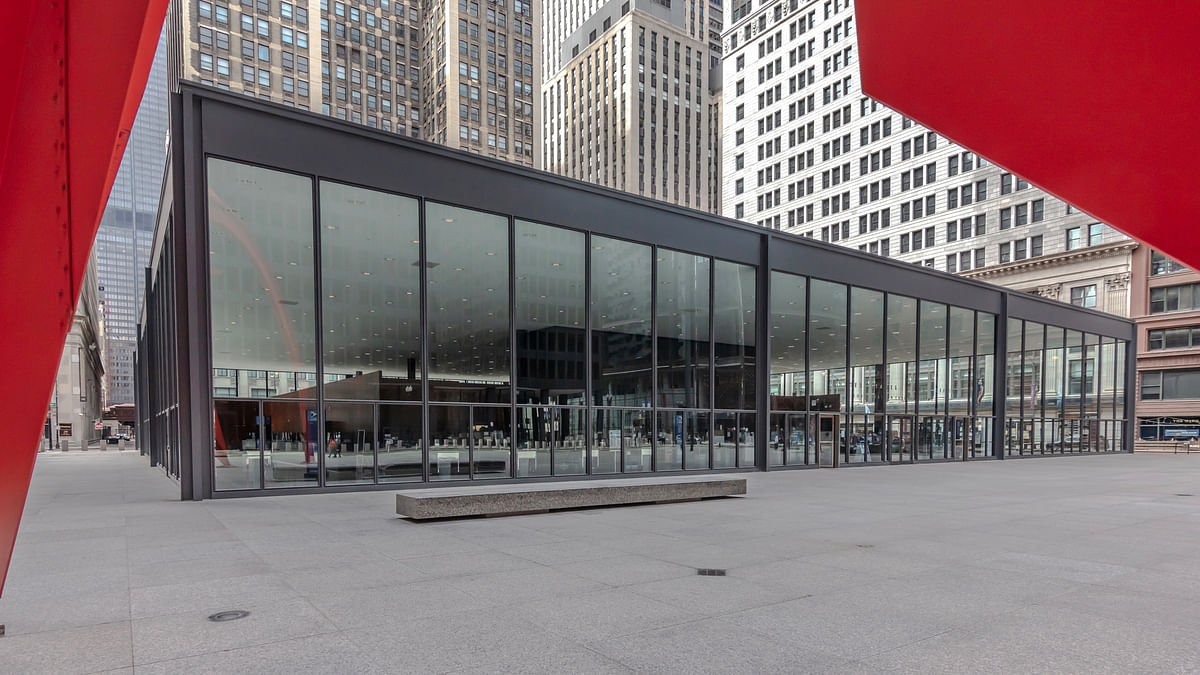
Docomomo US announces 2021 Modernism in America Award winners
By Josh Niland|
Thursday, Sep 23, 2021
Related
Docomomo US has announced the winners of its annual Modernism in America Awards recognizing important restoration projects throughout the country that represent best practices for architects and engineers, and grassroots activists working in the field of advocacy and preservation.
The winning projects have been selected for their ability to champion the architecture of Paul Rudolph, Mies van der Rohe, Phillip Johnson, and others whose designs drastically altered the built environment and visual landscape in America post World War II.
Seven projects were given Awards of Excellence while another seven received Citations of Merit. A Special Citation for Grassroots Initiatives was awarded as well.
This year’s awards will be presented on November 11, 2021, at the Design Within Reach Third Avenue Showroom in New York City. A full list of winners can be viewed below.
AWARDS OF EXCELLENCE
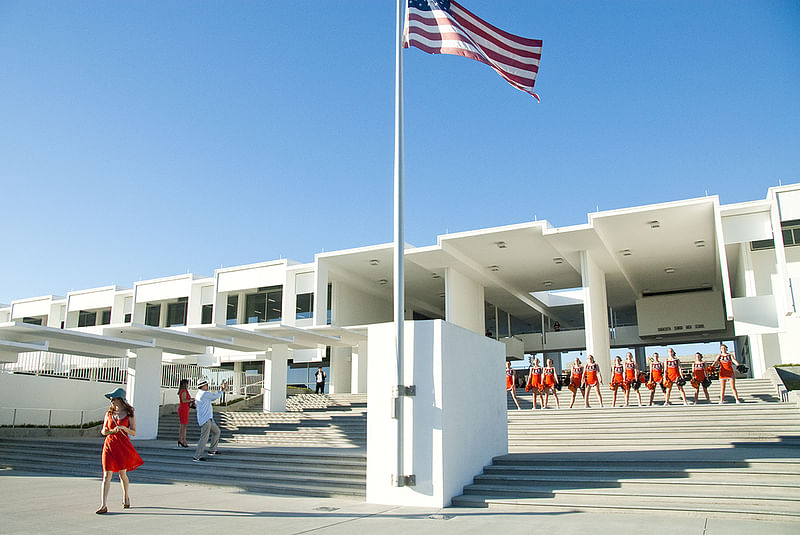
Advocacy Award of Excellence: Sarasota High School
Description: "The Advocacy Award of Excellence is given for the preservation and restoration of Sarasota High School (SHS). Signs that Paul Rudolph’s 1960 addition to the original Neo-Gothic high school might be threatened first appeared in 2007, when the Sarasota County School Board decided to demolish Rudolph’s nearby Riverview High School and also announced they would 'appropriately rehabilitate' Sarasota High School. In 2012, advocates successfully listed SHS on the National Register of Historic Places. Shortly thereafter, the School Board announced plans to significantly alter Rudolph’s design, prompting Sarasota Architectural Foundation (SAF) to launch an advocacy campaign. Their efforts included an organized lecture with leading experts such as Carl Abbott, FAIA, Joe King, and the Docomomo US/Florida chapter; hosting a 2-day community design charrette; the publication of a 32-page report with recommendations, hosting the first Docomomo US National Symposium in 2013, the establishment of the Paul Rudolph Scholarship Fund in addition to social media and letter-writing campaigns. Due to this pressure, the School Board collaborated with SAF, Jonathan Parks, AIA of Solstice Planning and Architecture, and Harvard Jolly Architecture to establish renovation guidelines. The renovation was completed in 2015, transforming it into the 'front door' of the high school campus. The distinctive concrete canopy walkway, an important element of Rudolph’s design linking his addition with the original high school (now the Sarasota Art Museum), was also saved twice over. In 2015 and 2017, SAF convinced both the Art Museum and the High School respectively to retain significant sections of the walkway. SAF provided funds to help cover the costs for the High School’s portion of the walkway. Advocacy Committee chair Todd Grover praised the project for 'hitting all of the right points - technical elements such as concrete repair, as well as advocacy.' Advocacy Committee member Barbara Campagna emphasized that it is a 'beautiful project that shows the results of the time and energy put into it.'"

Design Award of Excellence: Pālehua Cabin and Guest Cottage
Description: "A Residential Design Award of Excellence is given for the restoration of the Pālehua Cabin and Guest Cottage, designed between 1949-60 by Vladimir Ossipoff. Although Ossipoff is one of the leading architects of midcentury Hawai‘i, this site was relatively unknown and inaccessible to the public. Ossipoff spent nearly two decades of his life in Japan and was known for combining Japanese spatial typologies and craft with modernist principles and technologies. These ideas are made explicit at Pālehua, with typical Japanese elements found throughout the cabin. After the Ossipoffs ended their lease in the 1970s, the cabins were occupied by various tenants, enduring small alterations and poor maintenance. In 2009, the Gill family and the Edmund C. Olson Trust purchased the land to restore the forest and cabins. Faced with a miniscule budget and a remote site, the restoration was pragmatic yet highly sensitive to the original design, retaining or refinishing elements wherever possible, harvesting replacement timbers from invasive eucalyptus trees and strawberry guava, and sourcing new furnishings locally. No major changes were made to the cabins’ plan or program, and several elements were removed to restore the property to its period of significance. Set amongst stunning views of the surrounding Wai‘anae Mountains, this years-long restoration was truly a community undertaking and is now accessible to the public as a venue and overnight rental, with proceeds supporting ongoing forest restoration work and environmental education. 'This project took a deep dive into the cultural context of the original design. The restoration speaks to the site’s significance and evolution and is a lesson in restraint,' praised jury member Gina Ford. Jury member Meredith Bzdak added that it is 'rare to see a fragile resource like this preserved in such a beautiful and awe-inspiring location, and for it also to be publicly accessible.'"

Design Award of Excellence: Rothko Chapel
Description: "A Civic/Institutional Design Award of Excellence is given for the restoration of the Rothko Chapel, a mid-twentieth century masterpiece begun in 1964 as a collaboration between Philip Johnson and Mark Rothko and completed in 1971 by Eugene Aubry and Howard Barnstone. The long-awaited restoration was initiated in anticipation of the Chapel’s 50th anniversary with the goal of restoring the visitor’s sense of awe and creating a campus grounded in both the singular power of the Chapel and the unique character of the neighborhood. The project addressed several challenges that have disrupted the original vision of the Chapel. Rothko’s original daylit vision of his artwork is finally realized with a new skylight that directs daylight through to the walls and away from the floor and ceiling, allowing visitors to read more depth into the paintings. The system also discretely integrates lighting and AV equipment to minimize its visual impact. In the 1990s, the original sequence of movement into the vestibule was altered, eroding the sense of quiet contemplation. The new sequence prioritizes accessibility and visitor interaction with the art and moves other activities to the new Welcome House across the street. To address increased hurricane activity brought on by climate change, the concrete masonry unit walls were reinforced, removable floodgates were installed, and the HVAC and an emergency generator were placed in the new elevated Energy Building. Jury member John Reddick commended the restoration for its 'thoughtful planning and modifications which create a more inviting and workable campus in conjunction with the mission and physical access to the Chapel.' In such a highly anticipated project, it can be tough to meet expectations, but as jury member Kelsey Keith explains, this restoration gave everyone 'exactly what they wanted. Meticulously and flawlessly executed, it does not disappoint.'"

Design Award of Excellence: Netsch House
Description: "A Residential Design Award of Excellence is given for the restoration of the Netsch House (1972-74), the personal residence of Walter Netsch, a daring and unconventional architect known for his fractal-like designs informed by his 'field theory' design philosophy. The restoration was led by Skidmore, Owings & Merrill (SOM), where Netsch worked from 1947-79. With this close connection to the original creator underlying the restoration process, the design team sought to maintain the spirit of the house while enhancing the expansive sense of movement, materiality, and light within the small space. Interior renovation choices included: painting surfaces a soft white to complement natural light from the skylights, installing minimal railings, creating custom furniture, and adding concealed sliding doors. These design choices prioritized the unique spatial experience while renewing select elements and transforming the space into a fully functioning and safe home for its owners. The project has 'a great narrative arc, and the execution is thoughtful and practical. It retains its quirks among conscientious design choices,' said jury member Kelsey Keith. Jury member Michael Chen agreed, noting that the team 'mapped everything, taking great attention to detail and really understanding the original intent.'"
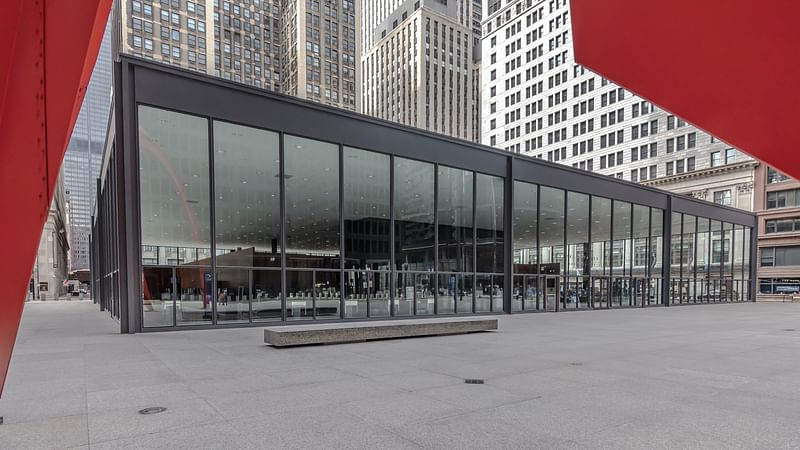
Design Award of Excellence: Chicago Federal Plaza United States Post Office
Description: "A Civic/Institutional Design Award of Excellence is given for the restoration of the Chicago Federal Plaza United States Post Office, part of the Chicago Federal Center designed by Ludwig Mies van der Rohe and completed in 1974, five years after his death. The complex epitomizes Miesian Modernism and the 'less is more' philosophy. Restoring an iconic design for which the defining characteristic is its minimalism can present an array of challenges. The design team took the smart and correct approach to focus on and get right the most important details, specifically the historic paint color (where previous maintenance campaigns had selected shiny black paint, their research and analysis revealed that a 'thundercloud gray' matte was a closer match to Mies’ original vision). They also addressed protective coatings and repair and reconstruction of the original steel framing and mullions. 'This project showed care for style, tradition, AND public space. The team is to be applauded for doing the right thing,' commended jury member John Reddick. Jury member Gina Ford appreciated that “they used solid forensic research and a humble approach to the restoration and only did what they needed to do to let the significance of the building shine through again."
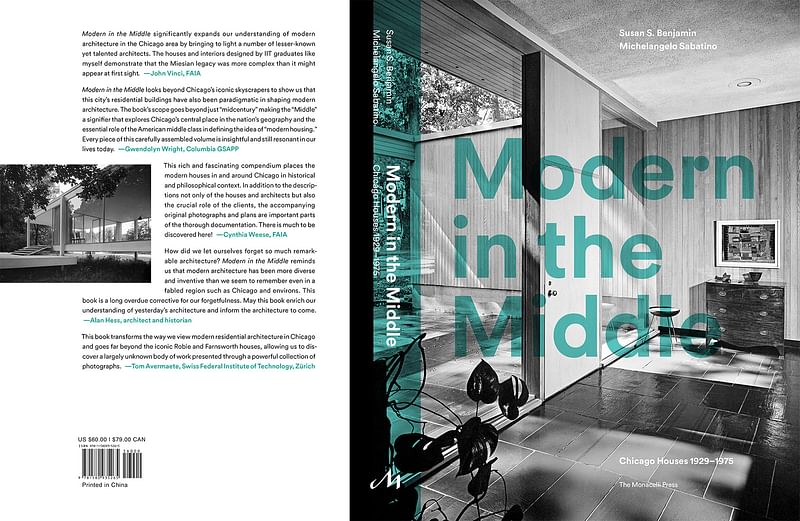
Survey Award of Excellence: Modern in the Middle: Chicago Houses 1929-75
Description: "An Inventory/Survey Award of Excellence is given for Modern in the Middle: Chicago Houses 1929–75. Published by The Monacelli Press in 2020 and co-authored by Susan Benjamin and Michelangelo Sabatino, this scholarly yet accessible book explores the substantial but often overlooked role that Chicago and its suburbs played in the development of the modern single-family house in the twentieth century. In a city often associated with the skyscrapers that define its skyline and the outsize reputations of architects such as Frank Lloyd Wright and Mies van der Rohe, the examples surveyed in Modern in the Middle expand and enrich the story of the region’s built environment. The authors made a deliberate point to include spouses or partners as clients and to present homes designed by underrepresented groups, such as Black architect John W. Moutoussamy’s family home (1954), the Ruth Koier and Laurence Sjoblom House (1960) designed by Jean Wehrheim, one of the few women architects practicing at the time, and the Ming Djang and Chung Kuo Liao House (1966), designed by Chinese-American architect Y.C. Wong. Equal parts architectural, cultural, and social history, Modern in the Middle provides accessible research in an enjoyable format that will help homeowners, preservationists, and the general public to better understand and protect Chicagoland’s modern residential legacy. Jury chair Marcel Quimby lauded the 'breadth and depth of entries, making for a delightful and informative read.' Jury member Gina Ford emphasized the inclusion of 'unsung stories and testimonials which provide concrete support for the broader story.'"

Survey Award of Excellence: Boston City Hall Conservation Management Plan
Description: "An Inventory/Survey Award of Excellence is given for the Boston City Hall Conservation Management Plan (CMP), a five-year effort that pulled from over a decade of research, advocacy, oral histories, master planning, pilot projects, material testing, advocacy efforts, public engagement, and tactical initiatives. Engagement through interviews with key players from the era, including architect Michael McKinnell, shaped the document as a record for future generations. Supported by a Keeping It Modern grant from The Getty Foundation (a 2020 Modernism in America Award winner), the plan provides a framework to manage change necessitated by shifting city services, municipal functions, security, code requirements, and constituent needs. It includes 139 policies developed through a consensus-building process with city officials that are meant to enable change while ensuring Boston City Hall’s continued integrity across its next half-century of service. Members of the project team and preservationists also deserve recognition for their long-term advocacy efforts to encourage the City of Boston to embrace its modern architectural heritage. 'This is an important project that not only benefits the resource in question but has broad and lasting implications for similar resources,' said jury member Meredith Bzdak. Jury member Kelsey Keith further added that 'it is a tremendous feat to take a wide variety of inputs and create a coherent, succinct product. All imperiled concrete civic buildings should be so lucky to have a CMP that encapsulates the complexity required to preserve and evolve these buildings.'”
CITATIONS OF MERIT
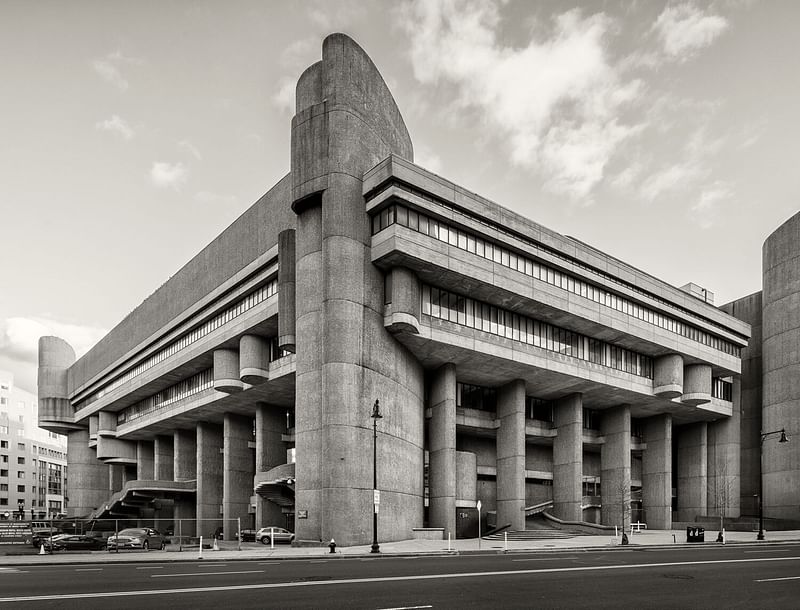
Advocacy Citation of Merit: Boston Government Service Center
Description: "An Advocacy citation of merit is given to the Massachusetts Division of Capital Asset Management and Maintenance (DCAMM) for their leadership in the proposed redevelopment and reuse of the Charles F. Hurley Building as part of the Boston Government Services Center (BGSC) designed by Paul Rudolph from 1962-71. Following years of education and advocacy by local organizations and individuals laying the seeds that Boston’s brutalist architecture including the Government Center and Boston City Hall are extraordinary contributions to the city, DCAMM brought together an internal and external group of local experts to provide background and understanding for the Hurley project that seeks a viable solution to meet the state’s downtown office needs and a new life and preservation solution for the building. DCAMM and the group of experts that include the Boston Preservation Alliance, Docomomo US/New England, Bruner/Cott, OverUnder, environmental advocates, those with development expertise, and many from the community worked together to consider how a redevelopment project could be successful while also being a model for future preservation projects locally, nationally, and internationally. Docomomo US acknowledges the important and independent role the Massachusetts Historical Commission and State Historic Preservation Officer played in this project to reinforce their responsibility in this project that the building was eligible for the National Register of Historic Places and alterations, or demolition would trigger a response from their office. We find this type of objectivity between state agencies to be essential and refreshing considering examples in other states where politics forces agencies to contradict their own responsibilities. While the Hurley project is in an early phase of redevelopment, Docomomo US is encouraged by the process and acknowledges the agencies and advocates in their role to find a viable preservation solution. Docomomo US Vice-President for Advocacy Todd Grover stated, “this Award acknowledges DCAMM and the Massachusetts Historical Commission and State Historic Preservation Officer for being ‘above board,’ taking input from concerned parties and the public, and adjusting course accordingly."

Design Citation of Merit: Marjorie M. Greene Residence
Description: "The jury awards a Design Citation of Merit for the restoration of the Marjorie M. Greene Residence, designed by Gregory Ain in collaboration with architects Joseph Johnson and Alfred Day in 1952, with an accompanying landscape by Garrett Eckbo, Robert Royston and Edward Williams from 1953. Prior to the May 2021 discovery of the lost Ain MoMA house in New York State, the Greene Residence was the only known surviving building associated with the Exhibition House. After a devastating fire in 2018, the Greene Residence has now been fully restored. Highlights include recreation of the original blueprints which were lost in the fire, salvaging of original frame elements, careful reconstruction of built-ins, and the development of new glazing to closely follow the appearance of the window walls of the 1952 post-and-beam structure, while providing better thermal performance than the original single glazing. 'Despite the opportunity to rebuild entirely new in line with market conditions, the owner and architects undertook a significant preservation effort,' noted jury member Michael Chen. Docomomo US President and jury member Theo Prudon added that 'the project shows exemplary diligence from a research point of view.'"
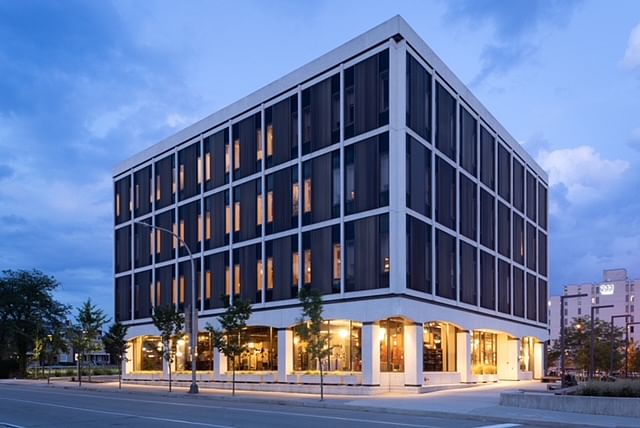
Design Citation of Merit: Detective Building
Description: "The jury awards a Design Citation of Merit for the restoration of the Detective Building, a prominent example of New Formalist architecture in Pittsburgh, PA, designed by Larson & Ludwig for the American Automobile Association in 1972. Sited within the East Liberty neighborhood, where a failed urban renewal project of the 1960s displaced residents and disconnected the street grid, the project team focused on creating a pedestrian-friendly plaza with green space, increased tree cover, a rain garden, bike parking, and precast concrete planters original to the building. For the building itself, much of the original materials and finishes were salvaged through reuse and repair. The existing steel frame was maintained, and exposed, precast façade panels were cleaned and repaired, existing concrete floors were polished and sealed, and envelope and energy efficiency improvements were incorporated. Once on the cusp of demolition, this 37,000 sq. ft. building is now an anchor of the neighborhood block. 'The cost and care to salvage a building that otherwise would have been demolished, and recognizing the beauty and utility of an extant structure, is admirable,' noted jury member Kesey Keith, adding that 'the exterior is made much less imposing with the new plaza design as well.'"

Design Citation of Merit: NYPL Macomb’s Bridge Library at Harlem River Houses
Description: "The jury awards a Design Citation of Merit for the restoration of the NYPL Macomb’s Bridge Library at Harlem River Houses. The Harlem River Houses were completed in 1936-37 as one of the first two federally subsidized public housing complexes in New York City in response to protests over racism and discrimination experienced by Harlem’s Black residents. The lead architect of the project was Archibald Manning Brown. John Louis Wilson, Jr., the first Black graduate of Columbia University’s School of Architecture, was also part of the team. Over the years, the building’s street-level commercial storefront tenants have dwindled. In keeping with the original intent of the Harlem River Houses to 'promote a sense of community, as well as to provide facilities that would specifically meet the needs of the Harlem Residents,' (from the New York City Landmarks nomination) a new branch of The New York Public Library was envisioned for the space. The seven storefronts were gut-renovated, walls were opened, and ceilings were raised to create a 3,500 sq. ft. library space with a Children’s Room, Adult Reading Room, Community Room, and various support spaces. The exterior was cleaned and restored, and storefront windows were replaced with bronze mullions and details to make them compatible with the original design while adding new insulated glass for energy efficiency. A new entrance and canopy were created at the south to give the branch greater visibility in the community. “Because the Harlem River Houses are a housing development that I have passed by in my neighborhood for several years, I have seen how the commercial tenants along 7th Ave have diminished or disappeared,” said jury member John Reddick. 'This reclamation of commercial space for a true children’s library meets the original spirit of the complex’s WPA-era development and delivers it in a very visible way behind the context of the building’s commercial frontage envelope. As the city and federal government look to address many of the longstanding issues of neglect around this and other similar housing developments, this is a shining example of what is possible.'”
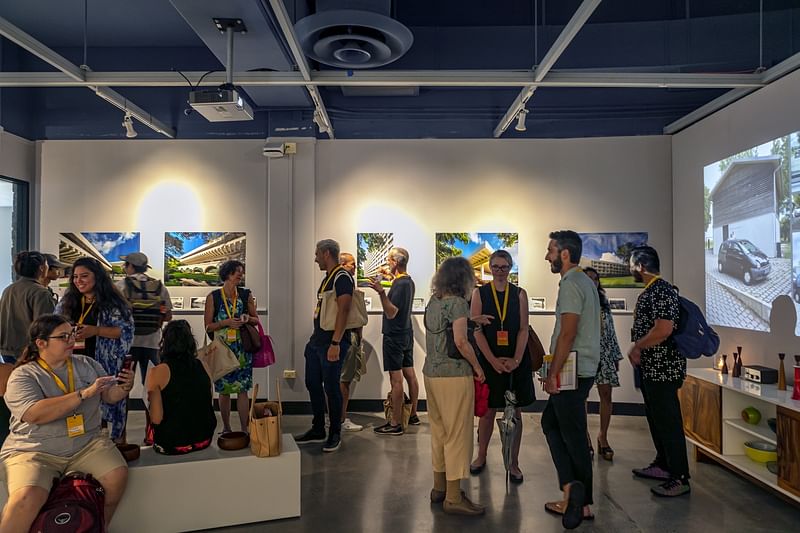
Survey Citation of Merit: Tropical Modernism at the University of Hawai‘i at Mānoa
Description: "The jury awards an Inventory/Survey Citation of Merit for the exhibition 'Tropical Modernism at the University of Hawai‘i at Mānoa.' Held September 25-28, 2019, the exhibition covered high points of campus design over the last seventy years, recognizing the University’s special relationship with the Tropical Modern movement, and highlighting its multi-cultural context which saw architects such as Ted Vieira, George K.C. Lee, Takashi Anbe, Hideo Murakami, and a young I.M. Pei experience greater opportunities for commissions. The exhibition was supplemented with a 36-page brochure profiling every architect involved in campus buildings as well as the people after whom the buildings were named, which was the first time this information was collected in one place. Information about the buildings presented in the exhibition lives on through the Haigo & Irene Shen Architecture Gallery website. Jury chair Marcel Quimby described it as 'a serious look at a university campus’s architecture,' and wished that 'all college and university campuses would follow suit.'"
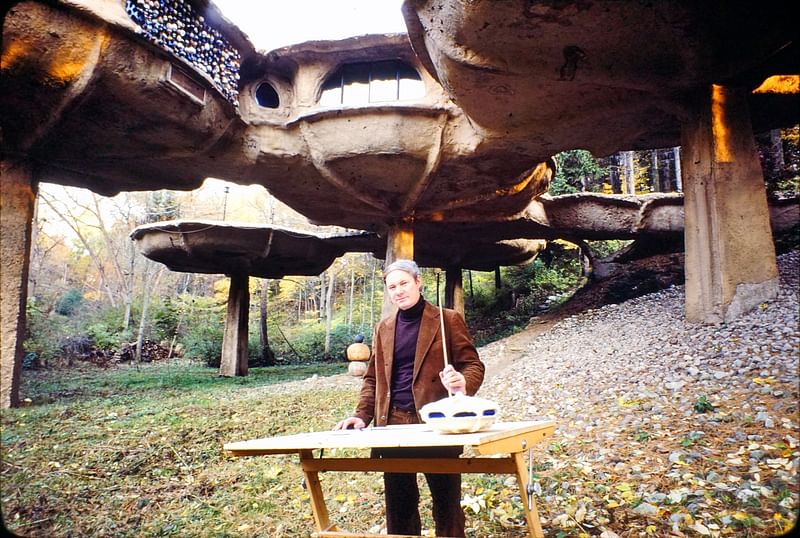
Survey Citation of Merit: The Architecture of James H. Johnson
Description: "The jury awards an Inventory/Survey Citation of Merit for The Architecture of James H. Johnson, a historic resource survey and subsequently completed book. Spurred by the loss of one of his key buildings, Our Lady of Mercy Rectory, in 2012, this is the first in-depth study and documentation of Johnson (1932-2016), whose lengthy career in Rochester, NY is best known for his series of innovative earth-formed concrete buildings. The team organized and inventoried Johnson’s files, which were in the condition of a working office rather than an archive, developed a language for describing and classifying Johnson’s unique buildings, developed a priority list based on determination of significance, and conducted interviews with colleagues and family members. This work enabled the New York State Historic Preservation Office to issue official determinations of eligibility for sixteen of Johnson’s buildings, with eleven additional buildings identified as 'Undetermined' and deserving of further study once they are closer to fifty years old. 'The assortment of documentation methods is commendable and provides an interesting story of Johnson’s regional and distinct practice,' noted jury chair Marcel Quimby."

Advocacy Citation of Merit: Milwaukee Preservation Alliance
Description: "The jury awards an Advocacy Citation of Merit to the Milwaukee Preservation Alliance (MPA), a non-profit organization devoted to promoting stewardship and awareness of the historic, cultural, and economic value of Milwaukee’s built heritage. This Award recognizes MPA staff, board members, volunteers, and partners for their efforts to celebrate and preserve Milwaukee’s modern sites and to educate their audience along the way. MPA has led and partnered on several high-profile campaigns including Save Our Domes (for the Mitchell Park Domes), the Marcus Center Campaign (to preserve its Dan Kiley landscape), and the Forest Home Library Campaign. MPA regularly incorporates modern sites into its communications and outreach efforts, placing mid-twentieth century resources on equal footing with older resources. Advocacy Committee member Eugenia Woo praised MPA for its 'comprehensive efforts that combine both advocacy and education,' and fellow committee member Flora Chou added that it is a 'great example of an organization that embraces and uplifts Modernism.'"
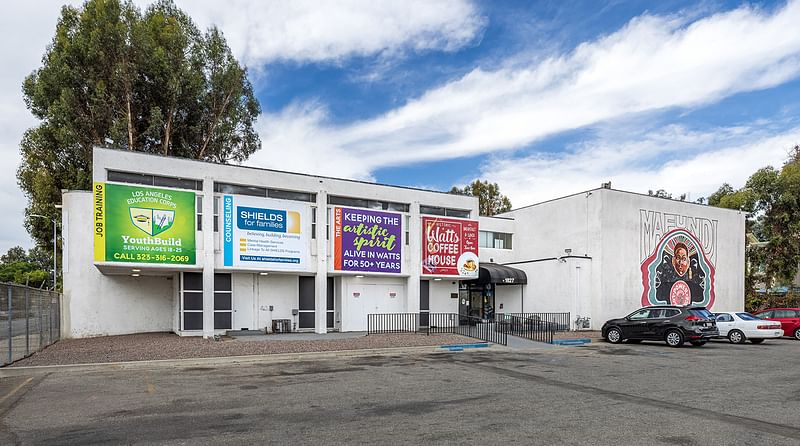
Special Citation for Grassroots Initiative: Mafundi Building
Description: "The jury awards a Special Citation for Grassroots Initiative to Friends At Mafundi (F.A.M.), a coalition that seeks to sustain the history, culture and tradition of the Watts neighborhood, for their efforts to save the Mafundi Building. The two-story, white stucco structure was designed by prominent Los Angeles-based Black architects Arthur 'Art' Silvers and Robert Kennard in 1969-70 as part of neighborhood revitalization efforts after the 1965 Watts Rebellion. In 1972, artist Elliott Pinkney added a powerful mural for the Mafundi Institute symbolizing the spirit of a resilient community. The building has been an anchor for many cultural and social service organizations over the years. F.A.M. formed in February 2020 in response to a request for proposals issued by the City of Los Angeles that left the Mafundi building open to demolition. F.A.M. raised awareness of the issue through online petitions, word of mouth, and social media. They encouraged supporters to submit comments to LA City Council. Rita Cofield, F.A.M. member and University of Southern California Master of Heritage Conservation alum, prepared a Historic-Cultural Monument application. At the Cultural Heritage Commission meeting in April 2021, numerous public comments were heard in support of the designation, and the Commission voted unanimously to landmark the site and cancel the RFP. The landmark process is still ongoing, and Docomomo US is pleased to recognize the success of the efforts thus far and to emphasize the need to preserve modern sites by Black designers and other underrepresented communities. Advocacy Committee member Flora Chou applauded the 'ability to put pressure on local agencies and make a difference in saving this building.'”

RELATED NEWS Ten projects win in 2019 Modernism in America Awards

RELATED NEWS Thirteen projects win in 2018 Modernism in America Awards


Share
0 Comments
Comment as :